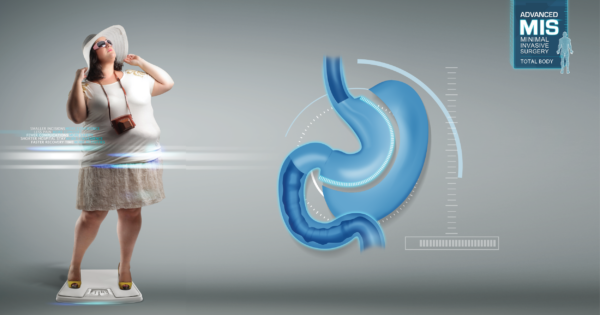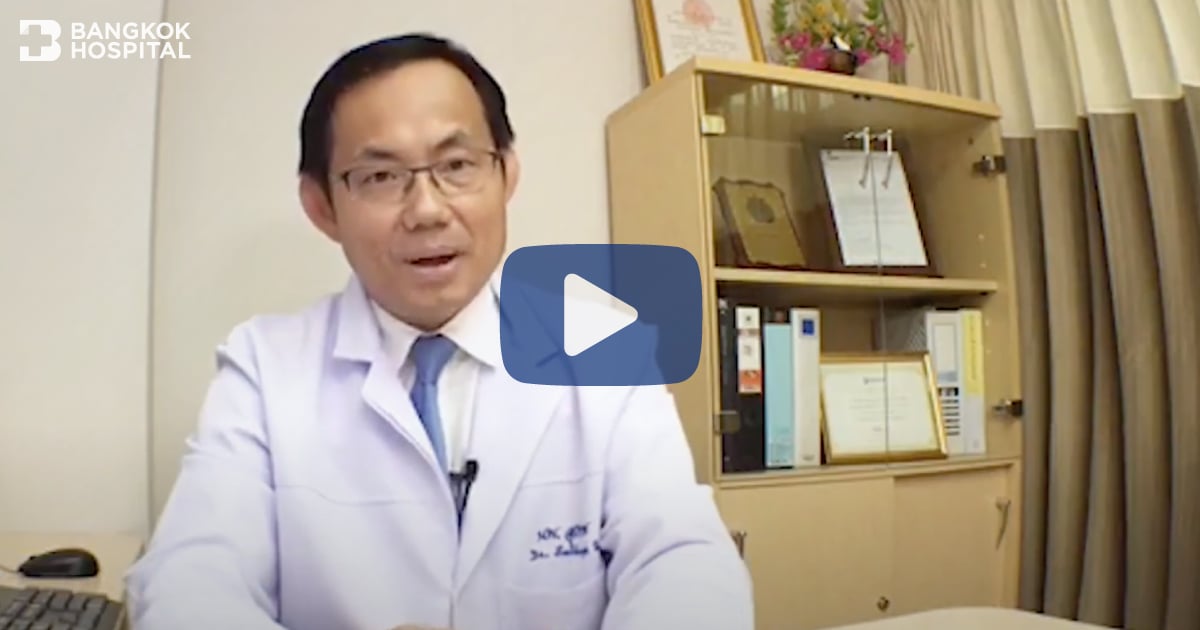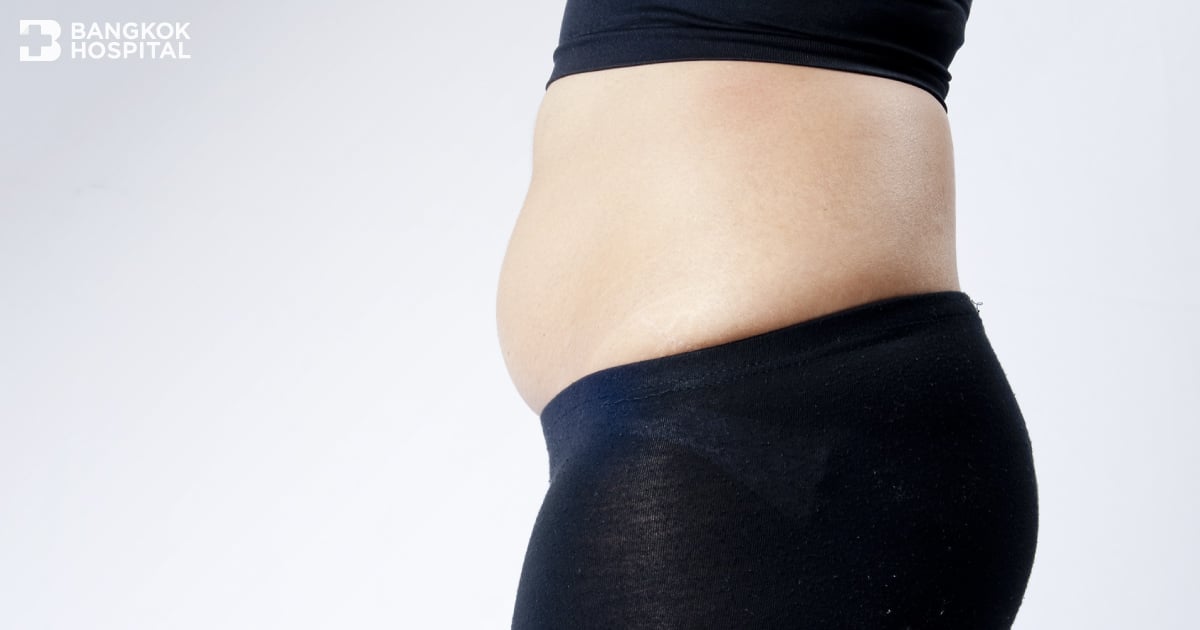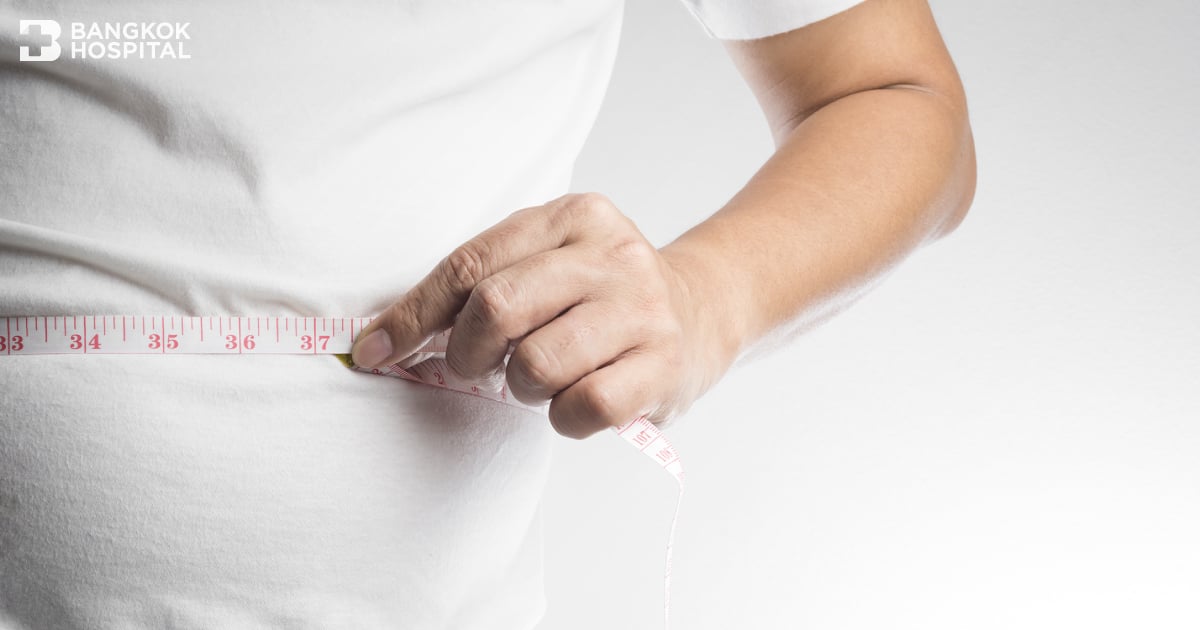Obesity has appeared to be a worldwide pandemic. It is a cause of many various complications and other chronic diseases such as diabetes, high blood pressure, heart and vascular diseases, gout, knee osteoarthritis, and including fatty liver condition which has become increasingly common.
In Thailand, about 10% of the population or around 6 million people, are afflicted by obesity. One of the causes of obesity stems from a person’s dietary habits – namely, over indulgence on food that is more than what the body needs, preferring high fat diet while lacking exercises.
How Is Obesity Determined?
People with body mass index of around 20 – 30, weighing perhaps around 70 – 80 kilograms, are not yet considered obese but plump or starting to get fat. They have to be careful as they are now at risk of becoming obese. Doctors usually recommend modifying their dietary habits together with more exercises. As a proportion of the entire population, those in this group amount to about 30% or around 20 million people. If they modify their dietary habits and exercise regularly, they will gradually lose weight until their healthy targets are achieved.
To determine whether or not a person is obese, the doctor has to consider many factors. For example, if the weight is more than 80 – 90 kilograms and the body mass index (BMI) is greater than 32.5 combining with comorbidity, the person is considered obese and may already begin to be affected by it. However, if a person has a BMI of about 30 – 37.5 but is without any comorbidity, the doctor will recommend similar actions – i.e., changing dietary habits with more exercises. In some cases, the doctor may prescribe additional medication to help block fat absorption internally. But this also means the patient must stop consuming food with high fat content, as otherwise the medication will not be effective at all.
For people who require more serious treatments, especially gastric restrictive surgery, their BMI’s must be 32.5 – 37.5 and they also have comorbidity, or their BMI’s are over 37.5. Sometimes people in this group can weigh more than 100 kilograms. When dietary control and exercises as well as medication are not effective, the doctor will then recommend a surgery to help them lose weight in the long run and, thus, reduce the risk of premature death.
The main goal of weight loss through minimally invasive surgery (MIS) is to decrease the size of the stomach so that the amount of food absorption is reduced. The gastric restrictive technique consists of 3 different procedures.
1. Laparoscopic Gastric Banding
In this procedure, the surgeon places a silicone band around the upper part of the stomach to create a small pouch of about 30 cc to hold food. The band restricts the stomach size and limits the amount of food it can hold, making the patient feel full quickly. After a period, the fat surrounding the stomach will gradually disappear. This procedure can help reduce around 60% of the excess weight. Though it is good because no part of the stomach is removed, the procedure may not be suitable for patients who are overly obese; especially if they do not have discipline in their eating habits, as they can become obese again afterwards.
2. Laparoscopic REY (Roux-en-Y?) Bypass Gastrectomy
In this procedure, the surgeon uses small implements to separate a portion of the stomach and shape it into a pouch which is then connected to the small intestine, creating a bypass of about 150 centimeters in length. Patients who have undergone this procedure must modify their eating habits, as they now have to chew their food until it becomes as fine as possible. This is because the food will not pass through the normal digestive process in the stomach, being already bypassed so that it will help the patients lose weight.
3. Laparoscopic Sleeve Gastrectomy – LSG
This procedure is more suitable for patients who are overly obese, having BMI of greater than 35 together with more than 2 comorbidities. In this procedure, the surgeon will remove about 80% of the stomach – including the part that secretes hormone responsible for making the patient hungry – and form the remaining stomach into a tube shape that looks like a banana, about 1 centimeter wide and 150 cc capacity. Because the stomach is now smaller, the patient will eat less. Through this procedure, a patient can lose about 40 – 60% of the original weight.
For these 3 procedures, doctors will only recommend them when patients cannot lose weight through normal means – dietary control, medication, or exercises – and are accumulating so much body fat that it is causing other health problems. Medical reports indicate that people who are obese usually exhibits excess accumulated fat around the abdomen and pancreas, as we may have heard about fatty liver condition already. Moreover, international researches have shown that, compared to normal women, there is a higher correlation between obese women and cancer of gynecological organs – such as ovarian cancer and uterine cancer – because fat has an effect on female hormonal system. Also, in men, obesity leads to a problem where the root of the tongue slips to block the air passageway during sleep, causing snoring and obstructive sleep apnea.
A gastric restrictive surgery may not yield instant weight loss. It may take about 6 months as the body burns away the excess fat. What is immediately noticeable, though, is the reduction in food consumption. As the patient eats less, the body will retrieve and use the stored constituents, causing the body to gradually lose weight until the desired target is reached.
“In any case, gastric restrictive surgery should be the last resort to treat obesity. And in the long term, dietary control is still an important factor. You shouldn’t eat more than what the body can utilize. And you should exercise regularly, so that fat is continually burned off. This way, the chances of being obese again is diminished.”







.jpeg)

